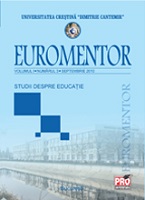THE RELEVANCE OF A CONTRASTIVE APPROACH TO TEACHING JAPANESE AS A SECOND LANGUAGE
THE RELEVANCE OF A CONTRASTIVE APPROACH TO TEACHING JAPANESE AS A SECOND LANGUAGE
Author(s): Iulia WaniekSubject(s): Language studies, Education, Foreign languages learning, Applied Linguistics, Comparative Linguistics
Published by: Editura Pro Universitaria
Keywords: contrastive approach in language teaching; Japanese language; foreign language teaching;
Summary/Abstract: Contrastive analysis studies have a well-established relevance for the teaching of foreign languages, despite the various reworkings, pros and contras brought by researchers such as L. Selinker (1972) and W. Nemser (1971) regarding interlanguage, or C. James’ error analysis theory. A teacher of foreign language is faced with many choices and questions in the various situations encountered in the classroom, that can only be solved through a process of trial and error. Selecting from this contrastive approach to language the elements that best fit one’s classroom situation is beneficial. The present paper is an overview of our experience in using a contrastive Romanian to Japanese approach in teaching Japanese to Romanian university students and of what could be done from now on as research on error analysis for Romanian students or in the field of textbook creation.
Journal: Euromentor Journal - Studies about education
- Issue Year: XII/2021
- Issue No: 2
- Page Range: 7-14
- Page Count: 8
- Language: English

